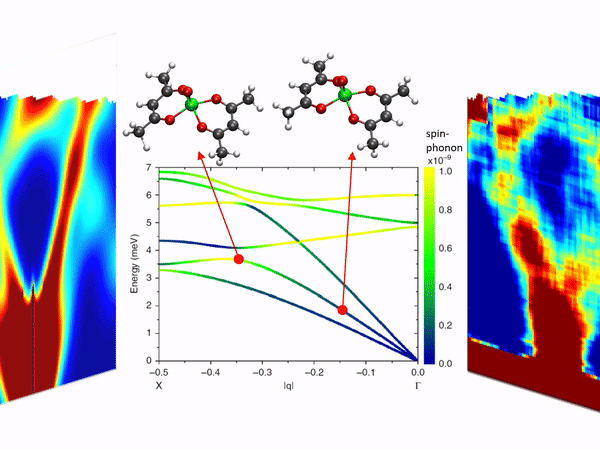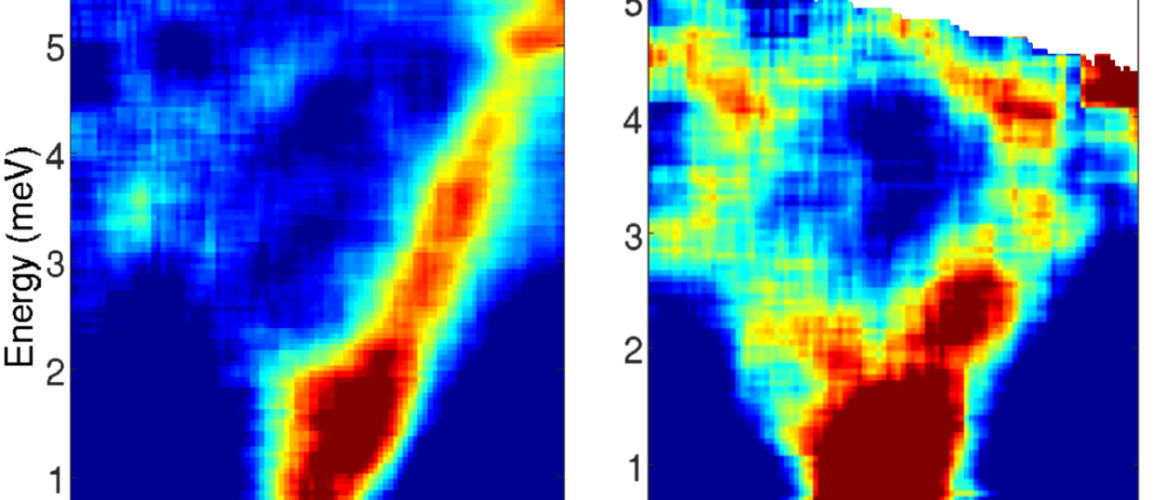New article from Alessandro Lunghi and coworkers in Florence, Parma and the UK demonstrating how acoustic phonons affect the spin relaxation in molecular spin qbits. The findings have now been published in the prestigious international journal Nature Communications.
In quantum computing, a qubit, or quantum bit, is the basic unit of quantum information. It’s the quantum version of the classical binary ‘bit’, the 1’s and 0’s that we might be familiar with in standard computing. Qubits are similar to bits, but also, vastly different. It’s this difference that scientists are trying to exploit to make quantum computers a reality, but this comes with some huge quantum hurdles.

Much like a ‘bit’ a qubit is a two-state system, but one which is governed by the physics of quantum mechanics, rather than classical mechanics. One common two-state qubit is the spin of the electron in which the two levels can be spin up and spin down. But, because of quantum mechanics, theoretically the qubit can be in both states simultaneously, a property which is fundamental to quantum computing (coherent superposition). One of the problems that has faced scientists since the dawn of quantum computing in the 1970’s is decoherance; by interacting with their surroundings, qubits do not behave as theorised. Put in terms of computing: if qubits store information based on being in both states simultaneously then decoherance means data will be lost.
We are now looking at the problem of decoherance using electronic structure calculations to provide an interpretation of the atom in line with experimental oberservations.
Dr. Alessandro Lunghi explains: “So far we don’t fully understand the details of decoherence but one suggested source is that vibrations occur in the material. Through our research we have new insights on the nature of these molecular vibrations and can propose new strategies on how to mitigate their destructive role on spin quantum coherence”.
Working alongside experimental teams based in the UK and Italy, Dr. Lunghi and Prof. Stefano Sanvito conducted theoretical and modelling work. “What makes this research unique” Prof. Sanvito explains “was that the experimental teams were able to observe vibrations of molecular qubits for the first time, and our TCD team made it possible to understand the nature and the details of how the observed vibrations couple to spin”.
Dr Lunghi goes on to highlight the importance of this research saying that “this is at the very forefront of the research field and sheds new light on a fundamental phenomenon such as the interaction between spin and atomic motion. This is a major step for us as it validates the models we have developed and means that we can understand and predict spin coherence in molecular spins starting from simulations. We can now use these models to design new compounds and set the starting point for the design of more efficient molecular qubits”
The full paper can be read here:
Garlatti, E., Tesi, L., Lunghi, A. et al. Unveiling phonons in a molecular qubit with four-dimensional inelastic neutron scattering and density functional theory. Nat Communication 11, 1751 (2020).
You can read more at Silicon Republic, Engineers Ireland, Science Foundation Ireland

